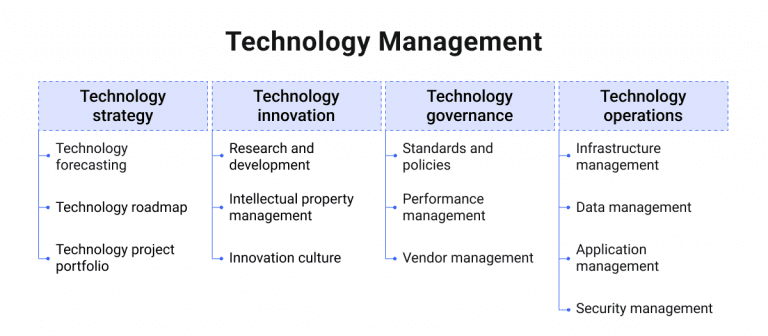We do IT for you!
Find out everything you need to know about being in tech.
Tech Support as a service
Tech Support as a service
Tech support as a service offers you all of Humanoid's know-how in one package. A responsible person is appointed for the customer, who takes on the task of managing the IT entity or other jointly agreed tasks.
Tech Management
Tech Management is a productized service, the end result of which is a concrete development plan for the development of your company's IT complex. This power crunch digs the skeletons out and blows projects in one fell swoop.
Tech Startup

A solution to your technology needs
About technology management

What is Technology Management
Technology Management components
Technology management is vital to any organization, as it effectively manages technology resources and their strategic use in the long term. It has a complex structure of various components, each playing a crucial role in the success of a company’s technology initiatives.
- Technology strategy
- Technology governance
- Technology operations
- Technology innovation
- Reliable services
- Sustainable
- Trained Professionals
- Insured delivery
What is technology management in practice?
Hire qualified professionals
How to improve Technology Management
Implement best practices
Adopting industry best practices for technology management can help organizations to optimize their operations and stay ahead of the competition.
Foster collaboration
Promoting collaboration between technology management and other departments within the enterprise can lead to more effective decision-making and better alignment with business objectives.
